Vertical Development is a unique form of personal growth that focuses on enhancing your internal operating system and developing the sophistication of your cognitive, emotional, and relational abilities. Beyond simply acquiring new skills, (horizontal development), it’s elevating the way you think, perceive, and make decisions, and with that, acquiring a deeper understanding of yourself and the world.
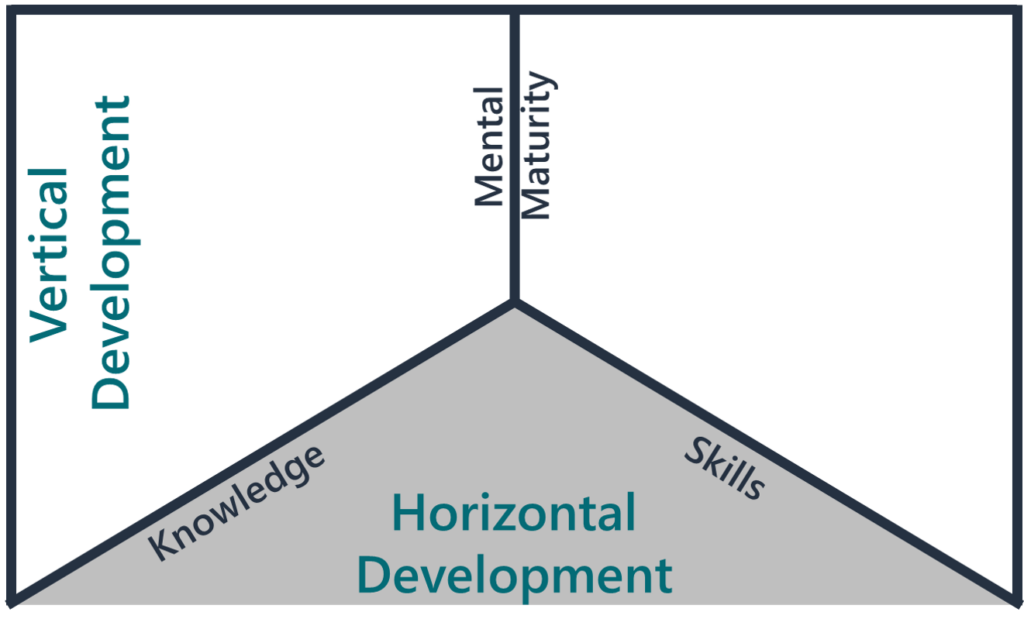
Vertical Development is an exciting frontier in personal and leadership development. Although the ideas behind vertical development have been researched for over 60 years, vertical development has only recently been brought to light in the organizational and personal development domains. And whether you’ve heard of it before or it’s all new to you, you’ve landed in the perfect place to learn more.
In this comprehensive guide:
- You’ll learn what Vertical Development is, and why it matters to selfless, visionary leaders and the companies waiting to develop them.
- We’ll explore how vertical development differs from the more common practices of horizontal development, and how it equips you to operate at a higher level and live a richer, more fulfilling life.
- We’ll explore the three levels of vertical development, and the characteristics that differentiate one level from the next.
- Finally, you’ll have the opportunity to discover your own vertical altitude and learn how to elevate to your true potential as a person and leader.
Vertical development research indicates that while most adults can vertically develop, (1) the majority of adults never vertically develop in adulthood, and (2) only a small percentage of executives ever reach the highest level of vertical development. But, by understanding vertical development, you will become empowered to upgrade yourself to elevate your life, your career, and your ability to have a positive impact on the world.
This guide will get you started.
Ready to elevate yourself, and your leaders?
Let’s dive in.
Part 1
Vertical Development: The Key to Reaching Your Potential as a Person & Leader
For forward-thinking individuals and companies, vertical development breaks new and important ground in the realm of personal and leadership development.
Why?
Because traditional, skill-based approaches are not very effective, and there’s ample evidence to prove it. Consider these findings:
- A Brandon Hall Group study revealed 75% of organizations rate their leadership development programs as being “not very effective.”
- The same company found 71% of organizations do not feel their leaders are ready to lead their organization into the future.
- A Zippia survey revealed only 48% of employees believe their leaders are of “high quality”.
Certainly, no organization wants poor leadership or goes out of their way to pay for ineffective leadership training. Which begs the question…why the disconnect?
One reason may be that at least 90% of organizational trainings focus on skills-based, or horizontal personal and leadership development. And they neglect the more transformational promise of vertical development.
So, what makes vertical development better? Let’s compare these two forms of development to find out.
Horizontal Development
Horizontal development, sometimes referred to as tooling up, involves improving knowledge, skills, and competencies.
It’s developing the ability to do more.
Think of it as adding an app onto an iPad. The new app broadens the iPad’s functionality, which has certain benefits. Yet, the addition of this new app doesn’t make the iPad faster, efficient, or more capable of complex tasks because it’s still using the same operating system.

The same is true for people. Take a specialized accounting course and you’ll be better positioned to land accounting jobs and perform accounting tasks. But you won’t be better able to navigate the stress and complexity of your career.
Horizontal development is a commendable approach, with one notable and significant limitation…
It trains us to do more, but it doesn’t necessarily help us be better.
Being better, rising to our peak potential, requires more than adding apps onto ourselves. It requires us to upgrade our internal operating system.
And that’s what vertical development does.
Let’s take a closer look.
Vertical Development
Vertical development focuses on leveling up our mindsets, values, and wisdom so that we (1) engage in more complex ways of thinking and perceiving the world, and (2) enhance our capacity to effectively navigate complex situations and challenges.
Technically, it’s elevating our mental maturity so we can function at a higher level of cognitive and emotional sophistication.
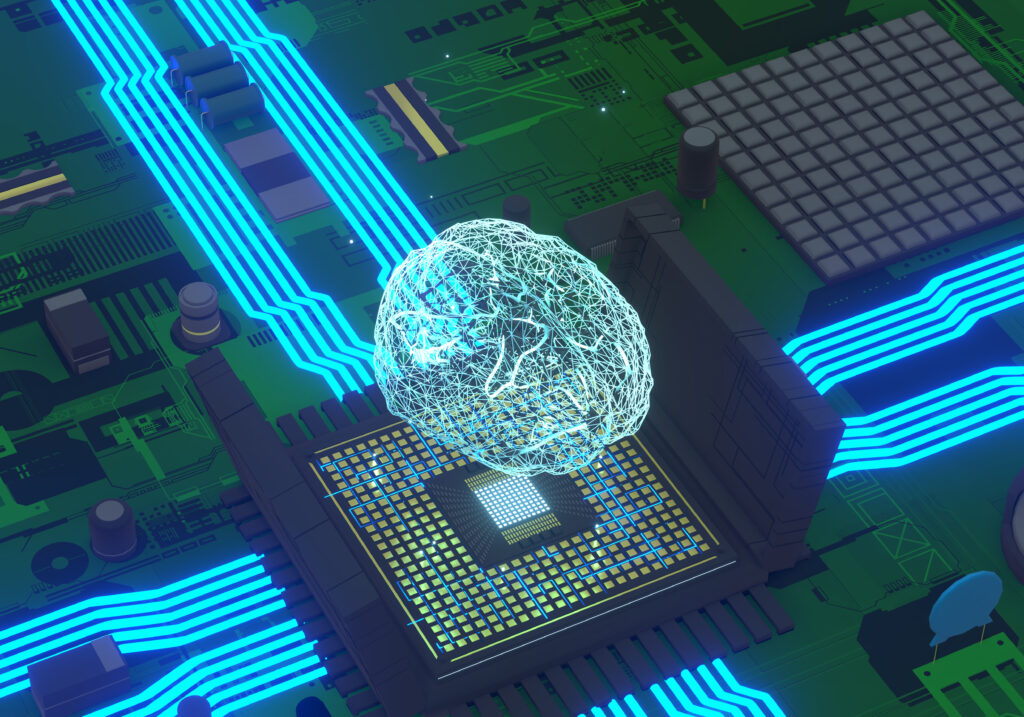
On the surface, vertical development implies expanding shifts in how we think. At a deeper level, however, it involves the healing and refinement of our nervous system.
Let’s dig into that a little.
People at lower levels of vertical development have narrower windows of tolerance, and thus have diminished capacity to step into and navigate stressful situations. They are generally more fearful, insecure, protective, and reactive (although they may not be fully aware of this).

However, those with higher degrees of vertical development have wider windows of tolerance. They can step into stressful situations and effectively navigate them. They rise above the situation, because they’re more stable, curious, empowering, and proactive.
How people handle failure gives keen insight to how they differ in their vertical development. A person who functions at a lower level of vertical development has a narrow window of tolerance for failure. Their internal operating system sees failure as a sign that they themselves are a failure (a perception that occurs at both the conscious and subconscious level).
The net effect? They tend to avoid challenges (because challenges are ripe for failure). By avoiding challenges, they stunt their growth, development, and progress. And, if they do fail, they beat themselves up or they take it out on others. A sign of a low level of cognitive and emotional sophistication.
Conversely, those with a higher degree of vertical development see failure as normal and natural, even a valuable opportunity to learn and grow. Their cognitive and emotional sophistication creates a much wider window of tolerance, making them more willing to approach challenges, accelerating their growth. And, if they do fail, they are able to stay present, centered, and balanced, and harness the failure to become better.
This example of how we see and navigate failure is one of many contexts in which our vertical altitude can be observed.
Each person functions at their own unique level of vertical development. And more importantly, each of us has the capacity to raise their vertical altitude.
In a moment, you’ll have a chance to assess your own vertical altitude. For now, let’s take a quick look at the history of vertical development.
Part 2
Where Does Vertical Development Stem From?
Historical Origins in Developmental Psychology
Though comparatively new in the leadership development space (the term vertical development was coined in the early 2010’s), research on vertical development has been around for over 60 years, with roots in developmental psychology.
From its origins in the 1880’s and on into the 1960’s, the primary focus of developmental psychology was on child development. Pioneers like Sigmund Freud, Jean Piaget, and John Bowbly helped us understand that as a child develops from infant to adult, they do so automatically through predictable, age-related stages.
For Piaget and others, developmental psychology rested its focus on childhood development because (1) it was physically obvious that children develop, and (2) it was largely assumed that one’s development stopped upon entering adulthood.
That assumption, however, took an important and game-changing turn in the 1960’s.
The Pivot towards Adults in Developmental Psychology
In the 1960’s, a select few developmental psychologists began to ask the questions:
- Can adults develop during adulthood?
- And, if they so, do they also develop through different stages?
The answers they’ve discovered since then are fascinating and ground-breaking.
They found that, yes, adults can develop. And yes, there are different developmental stages in adulthood. In fact, there are three primary stages of adult development.

But what these adult developmental psychologists also found is that despite adult’s ability to develop, most people never really develop during adulthood. In fact, in their book Immunity to Change, authors Robert Keegan and Lisa Laskow Lahey report research finding that 64% of adults never vertically develop beyond the first stage of adult development.
Which brings us to an important differentiation between child and adult development. For children, development is a function of age. But, for adults, development is a function of awareness and effort. As you learn about the three levels of vertical development, and assess your current vertical altitude, you will be empowered to take the next steps in your vertical development journey.
Author’s note: Some of the primary researchers and thought leaders in the space of vertical development include Robert Kegan, Jane Loevinger, Lawrence Kohlberg, Terri O’Fallon, Suzanne Cook-Greuter, Ken Wilber, William Torbert, Antoinette Braks, and Nick Petrie. The content in this article is largely built upon their shoulders.
Part 3
The Three Stages of Vertical Development
Research in adult developmental psychology generally identifies three levels of vertical development, which I refer to as Mind 1.0, Mind 2.0, and Mind 3.0 (I use “1.0,” “2.0,” and “3.0” to signify the upgrade to our internal operating system that occurs when we vertically development, and “mind” because that’s the home of our internal operating system).
As we explore these levels, you’ll see that, at each level, our bodies are programmed to fulfill certain needs. And, as we vertically develop (enhance our cognitive and emotional sophistication), there is a corresponding shift in the needs we are wired to fulfill, transformationally shifting how we behave and operate.
Mind 1.0
When we operate in Mind 1.0, our internal programming is wired to fulfill three needs:
- Safety
- Comfort
- Belonging
Those who function at this level generally seek to join or become affiliated with groups that will help them feel safe, comfortable, and like they belong. When joining these groups, they do not seek to take charge. Instead, they are willing to be “good soldiers,” follow directions, and live up to the group’s expectations, provided the group continues to ensure their safety, comfort, and belonging.
Essentially, Mind 1.0 individuals are exchanging their power and independence for the fulment of their needs. As such, they operate as dependent thinkers.
Also, Mind 1.0 individuals generally are sensitive to and have narrow windows of tolerance for anything that might make them feel unsafe, uncomfortable, or likely they don’t belong. For example, they are prone to:
- Avoid challenges that may lead to failure as failure may signal that they aren’t valuable to the group
- Get defensive when receiving constructive criticism as that might be a signal that they are no longer safe or no longer belong
- Get stressed when they have to take responsibility, because if they “drop the ball,” they may put their standing in the group at risk
- Get angry, anxious, or depressed when they don’t feel accepted
Other indicators that a person or leader functions at the Mind 1.0 level?
- They’re more comfort-driven than goal or purpose-driven.
- They resist change and innovation.
- They’re short-term oriented (as they want to fit in right now) and have difficulty projecting into the future.
- They’re unwilling to tolerate short-term pain in exchange for long-term success.
We’ll use the Emperor Penguin as models for those who function at the Mind 1.0 level.

The male Emperor Penguin will stand over the egg for nearly 70 days, huddled closely and braving gale force winds as their mates march to the sea. Mind 1.0 penguins want to get to the center of the huddle because that is where they will feel the most safe, comfortable, and like they belong.
Similarly, the Mind 1.0 internal operating system is wired to keep us in the center of the colony, where it’s safe and comfortable. We prefer to stand in, safely in the middle of the colony, as opposed to standing out.
Research has revealed that 64% of all adults and 7% of executives operate at this level. The good news is that we’re all capable of developing vertically.
Mind 2.0
For those of us who operate at the Mind 2.0 level, our internal operating system is wired to:
- Stand out
- Advance
- Get ahead
Mind 2.0 is a dramatic shift from Mind 1.0 because we’re at a state of cognitive and emotional sophistication where we willing to be unsafe, uncomfortable, and not belong in order to stand out, advance, and get ahead. It’s a transition from being a good soldier to being a progress maker. We like to take charge and lead, and we’re focused on accomplishing outcomes that help us emerge and stand out from the huddle.
Research has found that 35% of all adults and 85% of executives operate at Mind 2.0.
To continue the penguin analogy, the Mind 2.0 person has a wider tolerance for being “exposed.” In fact, the idea of being at the center of the huddle seems smothering and limiting.

Correspondingly, the shift from Mind 1.0 to Mind 2.0 sees an evolution from dependent to independent thinking, a level of maturity that allows us to push back against the beliefs, ideals, and norms of the group and stand independently on our own.
And with the shift to independent thinking comes the desire to employ those independent beliefs we’ve worked hard to develop. Thus, when people shift from Mind 1.0 to Mind 2.0, they aspire to leadership roles. Which is why 85% of executives operate at this level.
Other indications of a person or leader who operates at Mind 2.0?
- A focus on results and outcomes that allow them to stand out.
- A focus on short-term measures of success that enable them to get ahead.
- They operate a very high pace and are impatient with others.
- They can be controlling, autocratic, and struggle with delegation.
- They are doers, who are prone to take action and are often the first to put out fires.
The growth from Mind 1.0 to Mind 2.0 is significant, and while it is an upgrade, operating at this level is still limiting. Let’s move on to the next and final stage of vertical development, Mind 3.0
Mind 3.0
Leveling up to Mind 3.0 brings with it yet another meaningful shift in our internal programming. No longer focused on standing in (Mind 1.0) or standing out (Mind 2.0), we instead focus on fulfilling the intrinsic needs of:
- Contributing
- Adding value
- Lifting others
In effect, we evolve from being a progress maker to being a value creator.
The shift to Mind 3.0 is important, because where the Mind 1.0 and Mind 2.0 operating system seeks what is to our benefit, Mind 3.0 is wired to benefit something greater than ourselves.
How exceptional is this shift? Only 1% of all adults and 8% of executives operate at the Mind 3.0 level.
Leveling up from Mind 2.0 to Mind 3.0 also involves a shift from being an independent thinker to being an interdependent thinker. Mind 2.0 individuals hold ideas they believe are right, and are often unwilling to explore different ways of thinking. Conversely, Mind 3.0 will have beliefs of their own, but they don’t identify nearly as strongly with them.
The difference, perhaps, comes down to humility.
Mind 3.0 signals a strength to stand confidently in their position paired with the openness to seek out and acknowledge there’s more than one “right” perspective, which leads to a willingness to be vulnerable, to admit they may be “wrong,” and to change their ideas and beliefs.
Accordingly, the evolution to Mind 3.0 brings frees the individual of the short-term needs of “standing in” or “standing out,” which allows them to focus on the long-term, and become driven to a fulfill a purpose focused on contributing and adding value to others.
Other hallmarks of the Mind 3.0 leader?
- A greater focus on foundations (culture, purpose, strategy) than on the fruits (results, outcomes, and measures of success), because it’s the focus on foundations that creates value and success in the long-term.
- The ability to operate at a controlled pace. With a refined internal operating system, rarely will you find these individuals rushed. They create space for themselves, relationships, problem solving, learning, and mentoring others. They are resistant to getting caught up in day-to-day urgent needs.
To continue our penguin analogy, how might a Mind 3.0 penguin operate? Well, considering that the females lay their eggs 30-50 miles from their food source, and the males incubate the eggs for roughly 70 days, there are a lot of male penguins going hungry. In fact, the males lose half of their body weight during incubation. I believe a Mind 3.0 penguin would see an opportunity to create a huge amount of value for their fellow male penguins by bringing a food source to the colony. And, they would seek to do this, not to stand in more or to stand out more, but because they desire to contribute and add value to the colony.

Of the three mind levels, the people who operate primarily in Mind 3.0 are the most cognitively and emotionally sophisticated and perform at the highest levels.
Part 4
Vertical Development and Your Center of Gravity
Now that you have a sense of the three levels of vertical development, if you’re like most people, you may be asking yourself what is my own vertical altitude?

We’ll have a self-assessment coming up shortly, where you can discover the mind level you typically operate at. But before we get to that, it’s important to know that we rarely spend all our time at only one level. Given the conditions in the environment, the circumstances we find ourselves in, we often will move up or down. But, we generally have a level where we are most prone to operate from. We call this our “Center of Gravity.”
For example, if I normally operate at Mind 2.0 and step into an environment where I feel unsafe, I may activate my Mind 1.0 internal operating system as a way to protect myself. But, if I step into an environment where I feel connected to a long-term purpose focused on creating value for others, I may activate my Mind 3.0 internal operating system.
Thus, while it is powerful to ask ourselves, “What is my vertical altitude?” It may be equally, if not more, powerful to ask ourselves, “What is my Center of Gravity?” You’ll have a chance to discover that now.
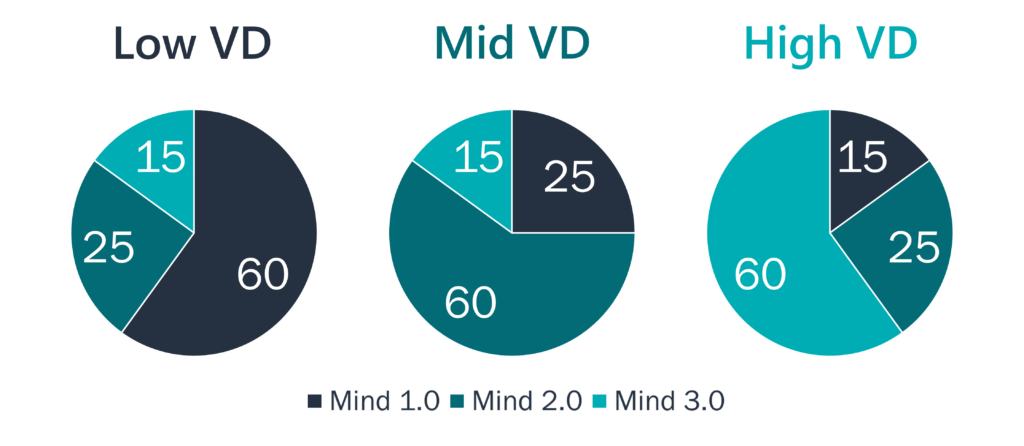
What Is Your Vertical Development Altitude?

Okay, like I promised, a chance to see where you fall on the Vertical Development scale. You can get a sense of your vertical altitude by taking this quick vertical development self-assessment. But before you click away, a few things to keep in mind as you review your results:
- This self-assessment is designed to help you identify your primary center of gravity. If your results indicate Mind 1.0 or Mind 2.0, that doesn’t mean you never operate in Mind 3.0. It only means Mind 3.0 isn’t your present default level.
- Keep in mind that 64% of all adults operate primarily in Mind 1.0, 35% at Mind 2.0, and only 1% of adults function at Mind 3.0.
Chances are, we all have the opportunity to elevate (we can never be done vertically developing). And regardless of your results, engaging in the assessment will deepen your awareness and give clarity to ways of elevating your cognitive and emotional sophistication. Go ahead and take the vertical development self-assessment, and we’ll see you here when you get back.
Part 5
Why Vertical Development Matters
We’ve defined vertical development as elevating and refining our internal operating system by becoming a more cognitively and emotionally sophisticated person and leader.
We’ve differentiated horizontal development (doing more) from vertical development (becoming better).
And, we know that developmental psychology has confirmed adults CAN continue to develop in their cognitive and emotional sophistication during adulthood (although most do not).
But why does vertical development matter to your personal success? Why, if you oversee leadership development in your organization, should you invest your resources in vertical development?
There are dozens of reasons why vertical development matters to people, leaders and organizations as a whole. But here are the three key reasons why the pursuit of vertical development matters:
- It allows you to develop the key characteristics of effectiveness.
- It helps you to close the complexity deficit gap.
- It helps you overcome insecurities that interfere with your effectiveness.
Let’s examine each of these now.
The Pursuit of Vertical Development Develops Key Characteristics of Effectiveness
If I were to list the characteristics typical of very effective leaders, I would include:
- Emotional intelligence
- Centeredness, balance, and stability
- Humility
- Proactivity
- Agility and Versatility
- Psychological flexibility
- Empathy
- Wisdom
From my experience, most developmental efforts focused on improving in these characteristics utilize horizontal development techniques. This is unfortunate, because these characteristics are not skill-based, they are neural-based. The development of these characteristics requires vertical development, and upgrade of our internal operating system.
Let’s illustrate using the characteristic of psychological flexibility.
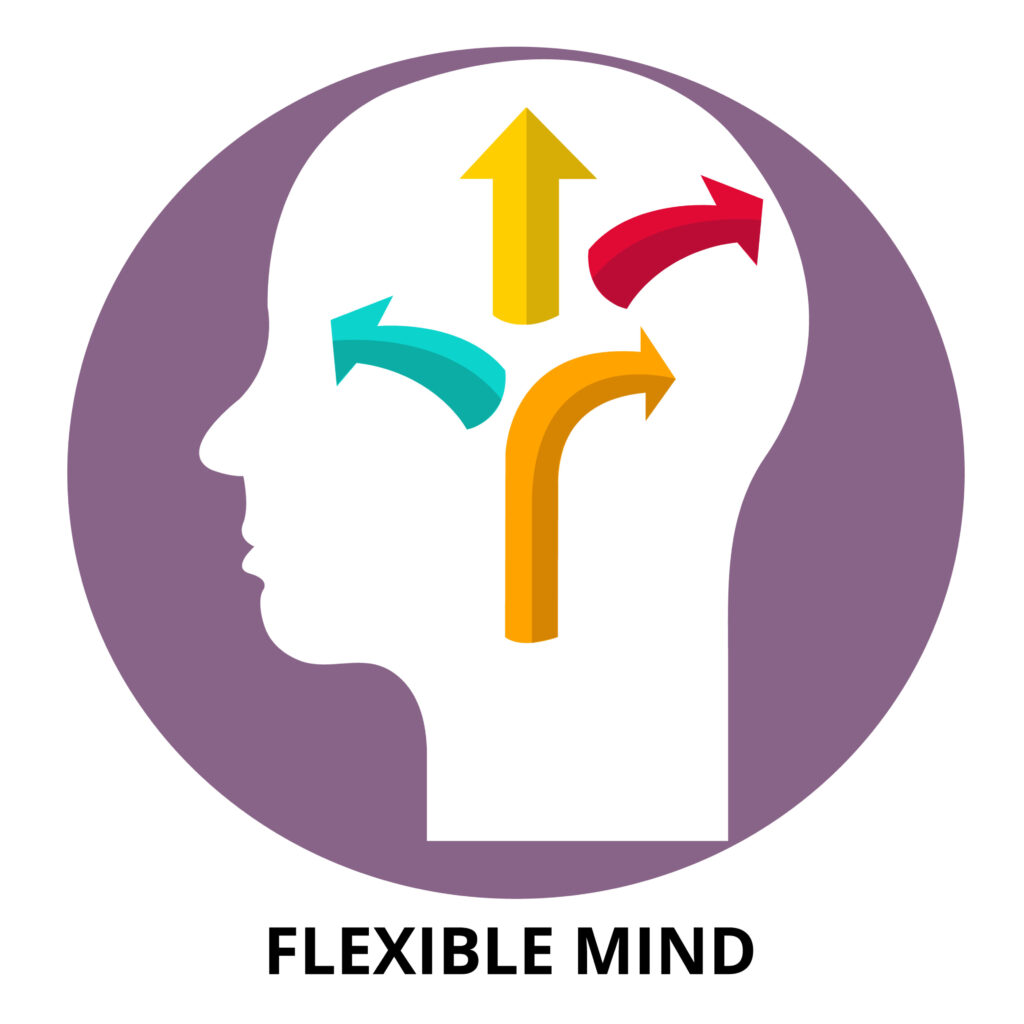
Those at the Mind 1.0 level aren’t wired for psychological flexibility because they’re resistant to anything that takes them out of their comfort zone. They’ll resist flexing by saying…
“This is how we’ve always done it.”
Similarly, people of Mind 2.0 also lack psychological flexibility, but it’s their independent thinking and strong identification with their beliefs that make them unwilling to flex. Their mantra?
“We have a proven formula for success, and we must stick to it.”
In contrast to both, those who operate at Mind 3.0 aren’t as identified to their ideas or their beliefs, and that allows them the psychological flexibility to best meet the demands of the situation and create the greatest amount of value given the circumstances. Their flexibility is reflected in their response…
“What has worked in the past, won’t be what helps us succeed in the future. We need to flex to better meet today’s and tomorrow’s needs.”
Getting to this perspective doesn’t come about by gaining new knowledge or skills. It comes about by widening one’s window of tolerance for uncertainty and complexity, and by elevating our cognitive and emotional sophistication.
Working On Vertical Development Closes Your Complexity Deficit Gap
Artificial intelligence, social media, even the COVID pandemic are telling signs that the complexity of our world is increasing at an exponential rate. Thus, it’s essential to ask the question…
Is my ability to navigate complexity keeping pace with the rate at which it’s escalating?
For most people, and many leaders, the answer is NO. In fact, the rapid rate of change in our world has created what some call a complexity deficit gap, where our ability to keep pace with complexity is falling behind the pace at which it’s growing.
Indeed, there is growing evidence to suggest most of us are operating in complexity deficit, and as such, fall to the lower end of the thriving scale: suffering, struggling, or, at best, surviving.
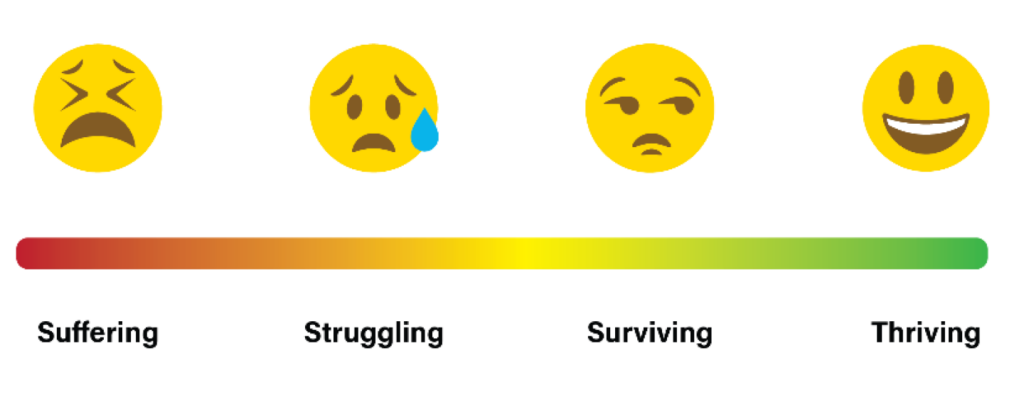
While many operating at a complexity deficit may not realize it, we’re likely feeling it, particularly if we’re organizational leaders. Consider the following statistics:
- 89% of senior executives suffered from at least one symptom of poor mental health
- 19% of senior executives experienced insomnia or disturbed sleep in the past year
- 26% of senior executives struggle with anger and impatience
- 30% of senior executives have experienced depression
- 7% of senior executives contemplated harming themselves in the past year
The implication is grim— when people operate at a complexity deficit, they not only lose personal effectiveness, but their well-being suffers.
To rectify the situation, we have two options:
- Wait for the complexity to decrease
- Elevate our ability to navigate complexity
Unfortunately, the rate of complexity isn’t slowing down. So, our only option is to elevate in our capacity to navigate it, requiring vertical development. But vertical development, becoming more cognitively and emotionally sophisticated, isn’t something that happens in a 5-day seminar (although that can help if done right). It’s a continual pursuit of becoming better, and it’s that pursuit that helps us close our complexity deficit gaps.
Specifically, as we develop vertically, we gain greater:
- Self-Complexity: We see ourselves as complex beings equipped to use our multifaceted nature to meet the challenges we encounter.
- Behavioral Complexity: We develop and employ wider ranges of behavior capable of meeting the demands of the situation.
- Moral Complexity: We arrive at solutions to moral dilemmas without conceding the needs and objectives of one ethical imperative over another.
- Emotional Complexity: We acquire the ability to (1) discern among many positive and negative emotions, (2) experience the richness of these various emotions, and (3) wade through diverse emotions simultaneously.
Complexity isn’t going away. But our ability to effectively navigate it can grow by leaps as we develop vertically.
Working on Vertical Development Overcomes Insecurities that Wreak Havoc on Personal Effectiveness
After working with thousands of leaders, I have learned the following:
- All leaders are trying their best to be good at what they do
- All leaders have unique strengths which allow them to excel (there is a reason why they have risen to the rank of leader)
- Very few leaders operate as great leaders
That third finding may be the most telling. Consider these statistics:
- 71% of organizations see their leaders as unable to lead them into the future
- 40% of employees rate their boss as “bad”
- 65% of employees would prefer a new manager over better pay
- 60% of employees report that their manager damages their self-esteem
- 75% of employees say their boss is the worst and most stressful part of their job
3 Case Studies Signifying the Need for Vertical Development
One reason for the dearth of great leaders is that most leaders have limiting insecurities that counteract their strengths. Here are a few examples.
Matthew

Matthew, the Vice President at a large regional bank, is well-liked. His positive attitude, charisma, and ease with others makes him easy to connect with, and the life of the party.
And yet, in my vertical development coaching with Matthew, we uncovered his struggles with taking any initiative without some form of approval from others. Even as a 50-year-old man, he feels the need to get approval from his parents to buy a new car.
Despite outward appearances, Matthew’s lack of self-confidence keeps him from being proactive, innovative, future-focused, and purpose-centered. Instead, he is approval-centered and reactive, prone to be more concerned about fighting fires than about leading his team to create value.
Sal

In just seven years as CEO, Sal has grown his technology company from a dozen to over 1,000 employees.
And half of that growth has come in the last 18 months.
Growth metrics like these have won Sal a variety of leadership awards from both publications and associations. But, in working with his executive team, I discovered Sal is a micromanager who lacks strategy and vision for the company. His team spends 80-hour weeks chasing every business opportunity available.
They’re burnt out and directionless.
In our first coaching call with Sal, I asked him “Why did you start your business?”
His answer?
“To prove others wrong.” (Do you sense the insecurity?)
What I have come to learn is that if Sal isn’t seeing growth or if a problem pops up in the organization, his internal operating system tells him he’s not proving others wrong. His deep need to prove himself has led to marvelous success, but it keeps him from operating strategically, with a lot of collateral damage.
Tori

Tori is the CEO of a real estate development company. Over the past several years her company has made two huge contributions to the region her company operates in, leading to both public and government recognition. One was the revitalization of previously abandoned buildings. The second was developing green energy infrastructure that will serve the region for decades.
Despite the great things she’s accomplished, Tori is a hard-charging leader prone to micromanaging. She’s authoritative, and at times even belligerent. And while things appear to be going well from the outside, the reality is that Tori, along with her employees, struggle to keep their well-being afloat, working under a consistent state of stress.
As I coached Tori in her vertical development, she said something I’ve heard from multiple CEOs…
“Deep down, I am not sure I like myself. I chase after winning the bid and completing big projects because that makes me feel of worth.”
Pursuing Vertical Growth and Tackling Insecurities
Matthew, Sal and Tori are each examples of leaders who do great things but who also are sabotaged by their own insecurities and limitations. They’re gifted leaders who remain stuck at the Mind 1.0 or Mind 2.0 levels.
Helping leaders rise above their insecurities and limitations is the promise of vertical development. It helps leaders heal their minds, hearts, and bodies so they can be driven by wholehearted purpose, and not the emotional lacking or the insecurities they carry.
Part 6
How Do We Develop Vertically?
The Practical Differences Between Horizontal and Vertical Development
All of us have been the beneficiary of horizontal development. It’s the focus of our education systems, and the model for all athletic development. It begins with identifying skill gaps. Once those gaps are identified, teaching and practice are encouraged to close those skill gaps. And, to the degree to which we receive coaching, the quicker we are at closing those skill gaps.

In contrast, comparatively few of us are familiar with vertical development, where the focus is on upgrading our internal operating system.

While some aspects of vertical development may appear similar to its horizontal counterpart, the focus and process is dramatically different. Because whereas horizontal development endeavors to learning and practicing new skills, vertical development begins with an awareness of our current neural programming. Then, once we identify limitations in our neural programming, generally with the help of a coach, we (1) try out new neural pathways, and (2) engage in exercises designed to rewire our mindsets. These efforts should be designed to strengthen our capacity for self-regulation.
While coaching is a valuable supplement to horizontal development, I believe that it is essential to the process of vertical development.
Why?
In my experience helping people vertically develop, I have observed that it is extremely difficult for people to (1) become aware of the quality of their neural programming and (2) develop the emotional courage to try out new neural pathways on their own.
Below, we will dive into specific ways that we can awaken to our neural programming and upgrade our neural programming for greater cognitive and emotional sophistication.
Vertical Development: Rewiring the Nervous System
The nervous system is home to our internal operating system. Thus, to upgrade your internal operating system, you’ll need to refine your nervous system.
And for that, there are two approaches vertical development coaches take.
- A Note on Psychological Trauma
You may be asking yourself why people get stuck at Mind 1.0 Mind 2.0, or what causes people to be self-protective?
The answer lies in understanding psychological trauma and its effect on our nervous system.
Psychological trauma is not a bad or stressful event or series of events that happen to us. It’s the self-protective adaptations our brain and nervous system created as a result of those events.
When we experience traumatic events, our nervous system naturally and automatically adjusts itself in an effort to protect us in the moment and moving forward in the future.
Here’s an example of how this works:
When my wife was three years old, her older brothers had her watch It, the movie adaptation of the Stephen King novel. In that terrifying experience, her nervous system processed clowns as a threat to her well-being. Thus, to protect herself from future threats, her body’s wiring changed adjusted to be hypersensitive to clowns. Anytime she would see a clown, her nervous system would subconsciously go into self-protective overdrive, turning on a variety of survival mechanisms (e.g., a rush of adrenaline) designed to keep her alive.
The more trauma (neural adaptations designed for self-protection as a result of stressful or harmful events) one experiences, the more hypervigilant (emotionally overreactive) or dissociative (emotionally underactive) one becomes. Either way, these self-protective adaptations, inhibits the Mind 3.0 characteristics of being balanced, emotionally intelligent, or psychologically flexible.
In the case of my wife, when she sees a clown, it is difficult for her to be emotionally intelligent (including having the ability to be sensitive to the emotions of others and navigate those appropriately) because she her body is overly focused on her own well-being. If she wants to elevate her emotional intelligence, particularly when she sees a clown, she’ll need to reprogram her body’s internal operating system.
The unfortunate reality is that over 70% of adults have experienced traumatic events which have rewired their nervous system to be overly self-protective. If that wiring is never upgraded, they remain stuck in Mind 1.0 or Mind 2.0. And to evolve to Mind 3.0, they’ll need to heal from and rise above their past trauma.
This is incredibly meaningful, because at its core, vertical development is the process of healing our mind, body, and heart from the effects of trauma.
Two Approaches to Rewiring Our Body’s Nervous System
The Top-Down and Bottom-Up Approaches are two ways in which vertical development coaches (or other professionals) help their clients rewire their nervous system to be less self-protective and elevate their cognitive and emotional sophistication to the Mind 3.0 level.
The purpose of each of these approaches are to refine and upgrade our body’s nervous system. Within our body, primary communication of our nervous system is vertical: mind-to-body and body-to-mind. The Top-Down and Bottom-Up Approaches start at one end, and work toward the other end in a manner designed to create more healthy connections, communication, and operation of our body’s nervous system.
We’ll explore both, but let’s begin with the Top-Down approach.
Top-Down Approaches to Vertical Development
In the top-down approach, we begin at our human brain, where cognition occurs, and move down into more of the implicit processes of our mammalian and reptilian brains, and from there, into the feelings of our body. As we go through this process of consciously and cognitively connecting with ourselves at increasingly deeper levels, we help the body and mind reconnect—or reassociate— to create better integration of the wiring in our mind and body.
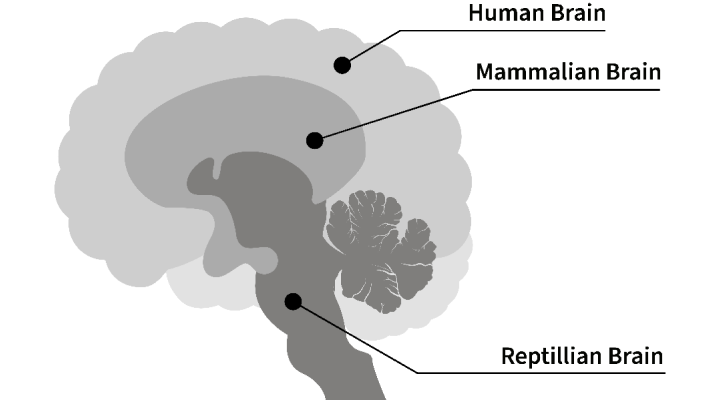
The top-down approach I’ve found the most helpful is through a focus on mindsets.
Focusing on mindsets is an effective way to vertically develop because our mindsets are they primary and crucial neural connections responsible for how we process and regulate ourselves.
Specifically, our mindsets are our body’s meaning makers. They subconsciously filter select information into our brain and interpret that information in unique ways, activating our bodily response based on how that information is interpreted.
When our mindsets are wired for self-protection, we have more narrow windows of tolerance and have lower levels of cognitive and emotional sophistication. When our mindsets are wired for value creation, we have wider windows of tolerance and higher levels of cognitive and emotional sophistication.
There are three steps to vertically developing ourselves through a top-down approach focused on improving our mindsets:
Step 1: Awaken to the Quality of Your Mindset
Our mindsets operate subconsciously to influence how we think, learn, and behave. So, the first step in improving our mindsets is to become conscious of them.
As I coach my clients, I begin by having them take my mindset assessment. This is the most comprehensive and research-backed mindset assessment ever developed and offers objective information about the quality of their mindsets. Over 40,000 people have taken this mindset assessment, and I have learned that only 2.5% are in the top quartile for the four sets of mindsets assessed (meaning: most of us have some self-protective wiring).
Next, I teach them about the four mindsets and how they affect our thinking and behavior.
- The Four Mindsets
In my research, I have scoured the academic literature for research on mindsets. What I have found is that four different sets of mindsets have been studied for over 40 years across the domains of education, psychology, management, and marketing. What I have done is brought these four sets together into one cohesive framework.
My mindset framework presents these sets of mindsets along a continuum. Mindsets on the negative side have been proven by research to lead to more negative results because they are less cognitively and emotionally sophisticated and more self-protective. Mindsets on the positive side have been proven by research to lead to more positive results because they are more cognitively and emotionally sophisticated and more value creating.
These four sets of mindsets are:
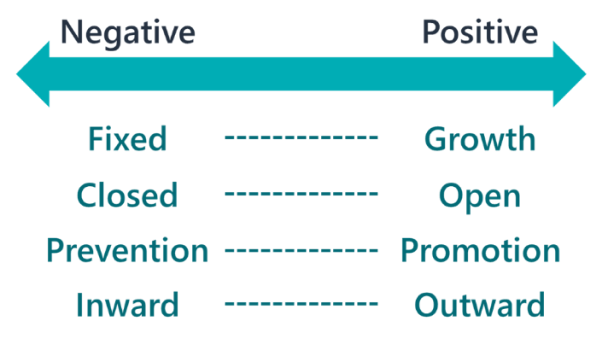
When I put labels and descriptions to these mindsets and invite my clients to take my mindset assessment, it helps them awaken to the quality of their own mindsets.
It’s only after this awakening occurs that we can move on to the task of improving and elevating our mindsets.
For more information about these four sets of mindsets, see my Wall Street Journal and USA Today best-selling book, Success Mindsets: Your Keys to Unlocking Greater Success in Your Life, Work, & Leadership.
Step 2: Go Deep on Mindsets
Experience has taught me that if people want to get a sense of how their life can be different, they have to engage in deep learning about mindsets.
For example, if I ask a roomful of 100 leaders if they have a growth mindset, almost all leaders will say, “yes.” But, my research indicates that over 50% of leaders actually have a fixed mindset. They have yet to truly understand what a growth mindset is and how a fixed mindset might be holding them back.
The more we know about mindsets, the more we can spot them in ourselves and in others. And, if we want to be great at our mindsets, we will need to become an expert in them.
Step 3: Exercise Our Mindsets

Once we know what mindsets we want to develop, how do we go about improving them?
To answer this question, it is helpful to remember that our mindsets are neural connections. And, our mindset neural connections are not too different from our muscles. They shrink if we don’t use them, and they strengthen if we do. Thus, if we want to develop more positive mindsets, we need to exercise our positive mindset neural connections.
But, just as with our muscles, developing positive mindsets takes continual effort over time. Research reveals that if we spend 5-15 minutes a day exercising positive neural connections, we’ll experience significant long-term effects in as little as a few weeks.
For guidance on mindset strengthening, my mindset assessment includes directions on how to access valuable exercises. Or, consider my Digital Mindset Coach, a micro-learning tool offering regular exercises for your positive mindset neural connections.
Bottom-Up Approaches to Vertical Development
As with the top-down approach, we are assuming that our nervous system is not highly tuned and that we need to refine it.
The bottom-up approach to vertical development seeks to refine the communication and regulatory abilities of our nervous system by first starting with the feelings in our body, and then moving up into the non-conscious processes of our mammalian and reptilian brains, and from there into our human brain, where cognition occurs. This effort create integration in our body’s wiring that has been disrupted by past trauma or lack of development.
Examples of Bottom-Up Therapies
My personal experiences and those working with leaders have taught me that bottom-up processes are best done with the guidance of a trained therapist. This is because a therapist can assist the client in being more intentional about their healing, and because the approach itself may require the directed assistance of a trained therapist.
Body Scan Meditations
Body scan meditations are guided meditations that help you connect with your body and the sensations within it (Insight Timer is an app that offers hundreds of such meditations).
Body scan meditations help in two ways:

- They strengthen and heal the mind-body connection that’s been disrupted because of past trauma.
- They help better regulate our body’s nervous system and widen our windows of tolerance.
Body Connection Activities
It is not uncommon for therapists to recommend body connection activities like yoga, Pilates, kickboxing, massages, or horse riding. Each of these activities, if done intentionally, can improve our mind-body connection.
Other Therapy Modalities
Other trauma healing-related bottom-up therapies have been found effective for vertical development (Bessel Van Der Kolk’s The Body Keeps the Score offers an excellent overview of various bottom-up trauma healing therapeutic approaches).
I personally have experienced two of these modalities, and have found them incredibly helpful for my vertical development. They are:
Part 7
How to Harness the Power of Vertical Development
When individuals or leaders vertically develop, they:
- Develop the characteristics of personal and leadership effectiveness, including emotional intelligence, psychological flexibility, and humility.
- Elevate above the complexity deficit gap, allowing them to navigate and thrive in a rapidly changing world.
- Rise above the insecurities that would once have sabotaged their strengths.
These three things are what all individuals should aspire to, and which all organizations hope for their leaders. So how do individuals and organizations harness the power of vertical development to experience these benefits?
For the organization to thrive, they need to:
- Inform their leaders and employees about vertical development.
- Provide access to vertical development coaching.
- Expand their benefits packages to cover a more diverse mental health menu of assistance.
From the individual to grow vertically, they must:
- Be willing to engage in development activities like mindset exercises and bottom-up therapies.
- Engage in vertical development coaching to (1) help them become aware of their neural programming, (2) develop the courage and accountability to experiment with new neural programming, and (3) establish a mindset development exercise regimen.
- Seek out safe and effective paths to healing past trauma.
It’s all a process, indeed a journey, and though some of it can be self-directed, the most effective path is to work with a vertical development coach.
Part 8
Vertical Development, Organizations, & the Five Laws of Effective Leadership
The benefits of vertical development for organizations can best be summarized through the Five Laws of Vertical Development:
- As leaders elevate in their vertical development altitude, they become more capable of effectively navigating tumultuous market conditions because they can:
- Respond to those they work with instead of reacting to circumstances.
- See things from a wider and more long-range perspective.
- Lead through purpose-driven strategy instead of outcome-driven objectives.
- Leaders implement organizational structures, practices, and policies that emerge from their vertical development altitude.
- Organizational culture reflects its leaders’ vertical altitude.
- Organizations cannot and will not function at a level above their leaders’ own vertical development.
- The most effective way of transforming an organization is to elevate the vertical altitude of its leaders.
If you’re ready to infuse vertical development into your organization, if you’re eager to elevate your employees, leaders, and organization as a whole, I have a variety of services and approaches that can help. You can find out more about Ryan Gottfredson in the bio section that follows this article, or on my website. Or contact me here.
Part 9
Notable Works on Vertical Development
- Robert Kegan: “The Evolving Self” (1982) and “In Over Our Heads: The Mental Demands of Modern Life” (1994)
- Jane Loevinger: “Ego Development: Conceptions and Theories” (1976)
- Lawrence Kohlberg: “Essays on Moral Development” (1981-1984)
- Terri O’Fallon: “STAGES of Consciousness in Theoretic, Observational and Intra-Psychic Domains” (2015)
- Suzanne Cook-Greuter: “Postautonomous Ego Development: A Study of Its Nature and Measurement” (1999)
- Ken Wilber: “Integral Psychology: Consciousness, Spirit, Psychology, Therapy” (2000) and “A Brief History of Everything” (1996)
- William Torbert: “Action Inquiry: The Secret of Timely and Transforming Leadership” (2004)
- Antoinette Braks: “Executive Coaching in Strategic Holistic Leadership: The Drivers and Dynamics of Vertical Development” (2018)
- Nick Petrie: “The Future of Leadership Development: Corporate Needs and the Role of Business Schools” (2014)
Part 10
Your Opportunity to Elevate Yourself and Others
Most people have never heard of vertical development. Because of that, they either stay stagnant or are continually underwhelmed by their development efforts.
But now that you know about vertical development, I hope you feel empowered to more effectively elevate yourself so that you can:
- Become more of the person and leader you desire to become
- More effectively navigate the demands and complexities of life and leadership
- Have more of the uplifting positive impact within our spheres of influence and responsibility
Further, if you are in a position of developing leaders, I imagine that you do what you do because you know that if you can elevate leaders, you can not only elevate the organizations they serve, but you can change the lives of those they lead. I hope that understanding vertical development transforms how you go about your development efforts, and in so doing, the influence you have on the leaders you work with, the organizations, they serve, and the lives of the people they lead.
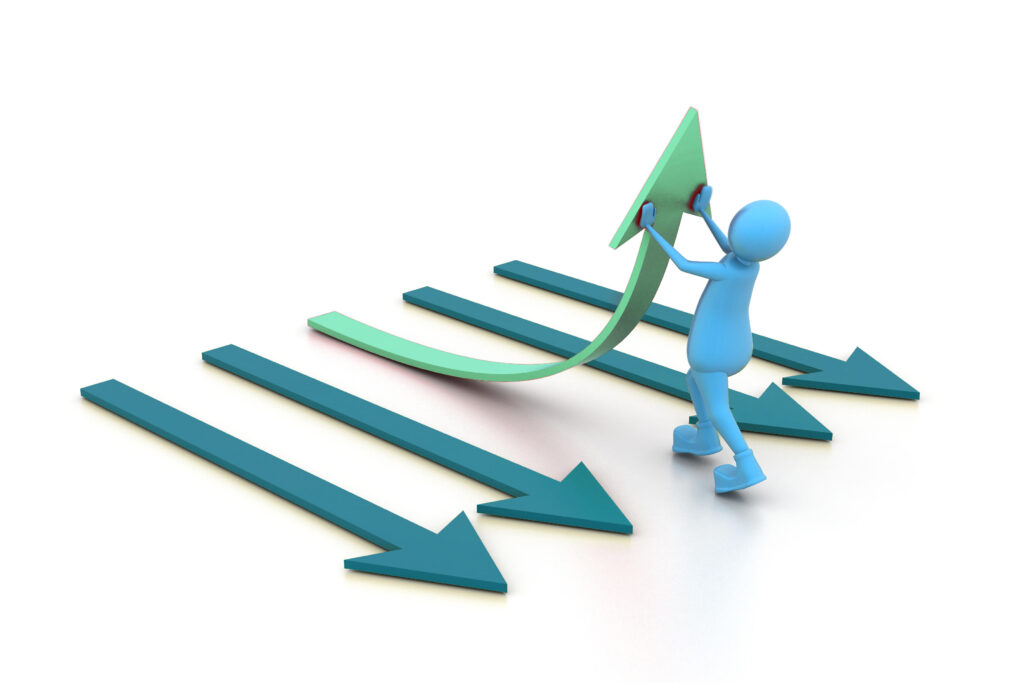
There surely is an important place for horizontal development, but I hope you improve the ratio of vertical development-to-horizontal development ratio, and experience the elevating effect of vertical development.
Together and collectively, I believe that the more we can elevate leaders, the more our world will elevate. Thank you for joining me in this journey.

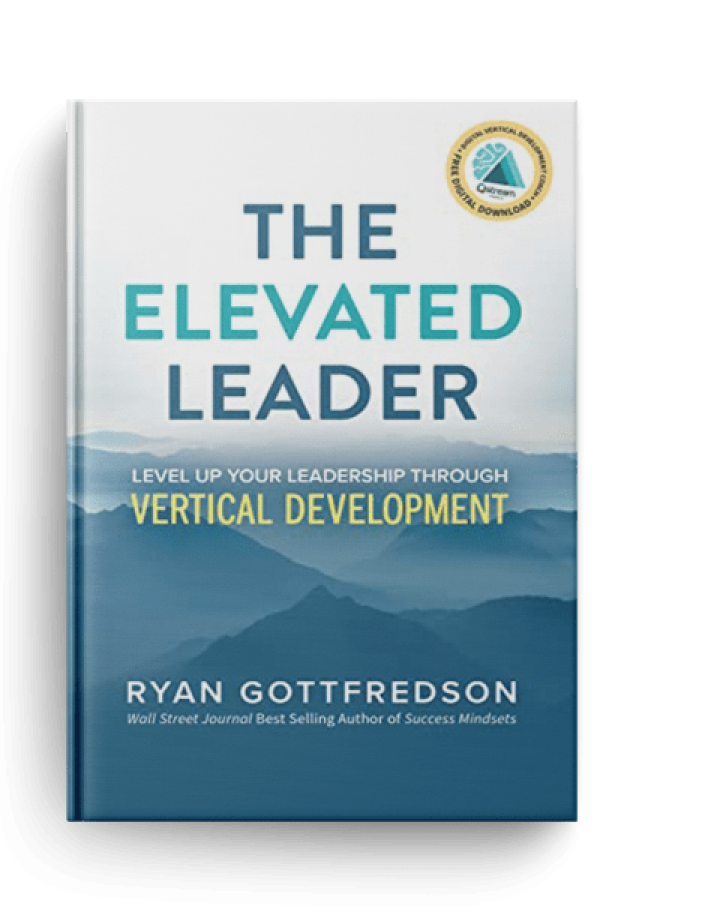









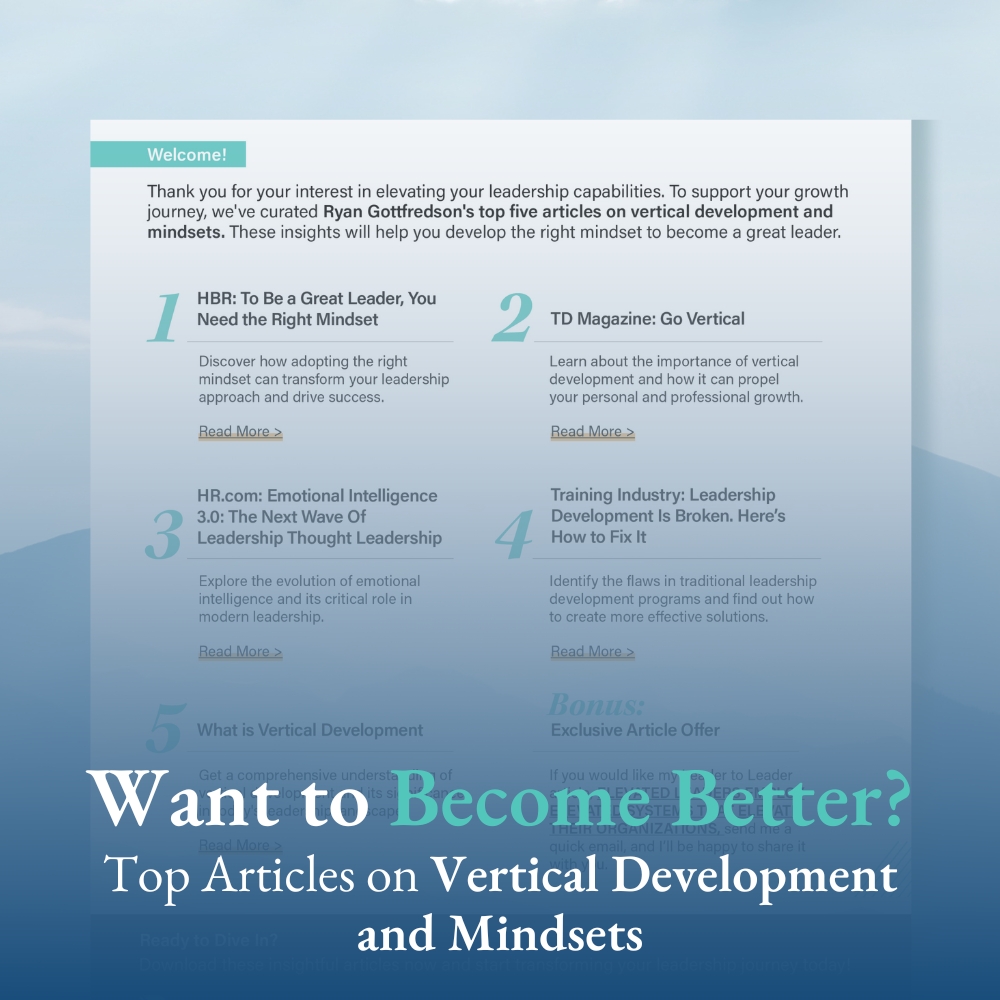
4 Responses
This post on vertical development really opened my eyes to the importance of mindset shifts in personal growth. Ryan Gottfredson’s insights on how our thinking influences our leadership capabilities are incredibly valuable. I’m eager to explore the concepts of vertical and horizontal development further! Thank you for sharing this essential perspective!
This post on vertical development really resonated with me! Ryan Gottfredson’s insights into how we can grow not just our skills but also our mindsets are truly eye-opening. I appreciate the practical examples provided; they make the concept much more relatable. Looking forward to applying these ideas in my own life!
So glad to hear!